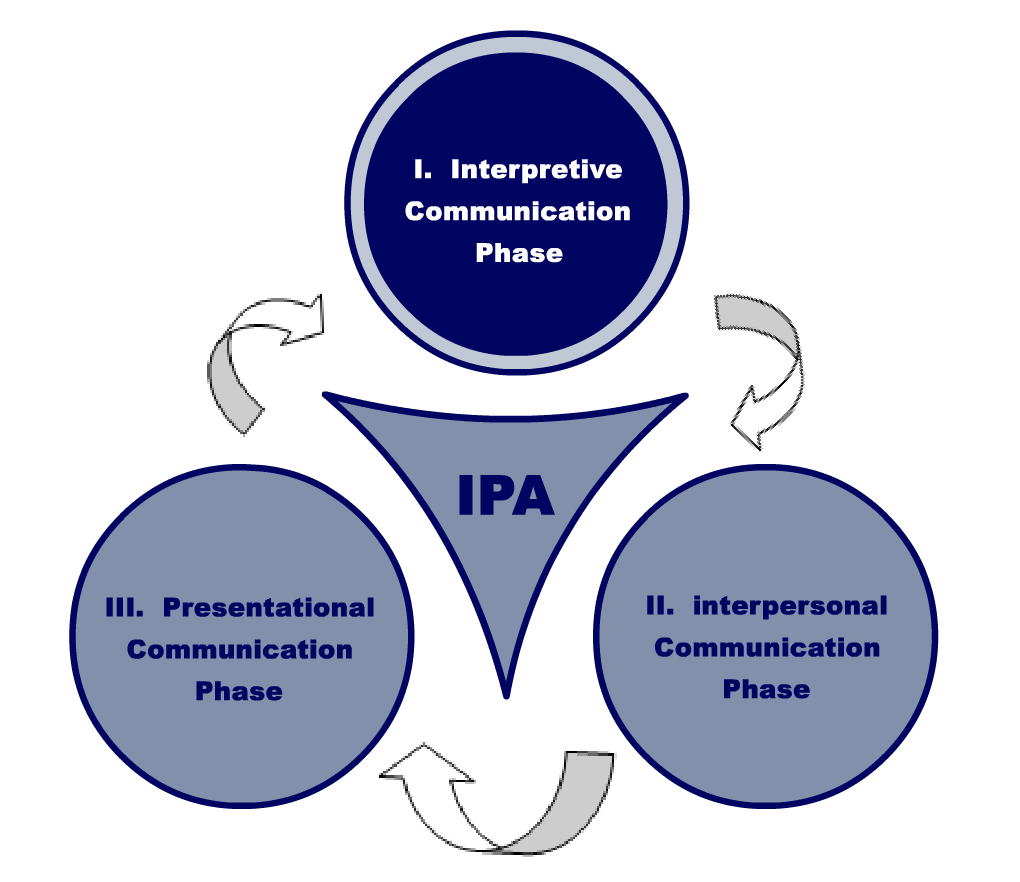 |
|
||||

|
Example 5: The European Union by Pam Wesely Phase 1: Interpretive Task Materials needed:
Description of the task: The text that I have chosen for this task is two pages long, copied out of a magazine for adolescents called Okapi (Descombe, 2004) (see Appendix A - jpg file). This text illustrates the European Union through photos, maps, and short text bubbles. The balance of illustrations and text provides an approachable, yet completely authentic, text for new students of French. Due to the students' low proficiency, it is best to work only with a written text at this point. Although I would like to provide this text for them in color, I have decided that it is simply too difficult logistically to do so; therefore, the map will not be in color and will be less useful for the task. I have provided the two-page comprehension guide in Appendix B. The first three-fourths of the guide feature questions that have only one correct answer in various forms of fixed-response formats. They will be worth one point each. These questions are primarily meant to elicit key word recognition (Glisan, Adair-Hauck, Koda, Sandrock, & Swender, 2003, p. 28). The last three questions are open-ended interpretation questions. These questions are more oriented to main idea detection, the second priority for novice-level authentic texts for Interpretive Tasks in the IPA (2003, p. 28). Students might give plausible and well-reasoned answers that are not technically correct for last three questions. I will score three points per response: three points is for a well-reasoned and correct answer, two points is for an answer which is not well-reasoned but correct, or well-reasoned but incorrect, and one point is for an answer which is a good try but not well-reasoned or correct, and zero for no answer at all. I will explain the task to the students, then I will go through the scoring system with them. Here is an approximation of what I might say:
Since the students are already
familiar with the European map and the names of the European countries,
this text will be approachable to them without
overwhelming them. The students will be given the remainder of the period
to complete the
comprehension guide, keeping the text as they answer questions. Most students
will probably complete the comprehension guide before the end of the class,
but
ample time should be given to all students. All of the questions on the
comprehension guide are in English, which is definitely appropriate given
their proficiency
level. Either during the class or at the beginning of the next day, after
having collected the comprehension guides, I will go over the correct responses,
including
several possible responses to the open-ended questions. I will hand back
the corrected guides soon thereafter. This will give me a chance to offer
responsive
feedback to help students to master important vocabulary for the Presentational
Task (Glisan et al., 2003, p. 12).
Navigation: Follow the IPA process or go directly to the section that is of most interest to you by clicking on the appropriate category
|
||||
